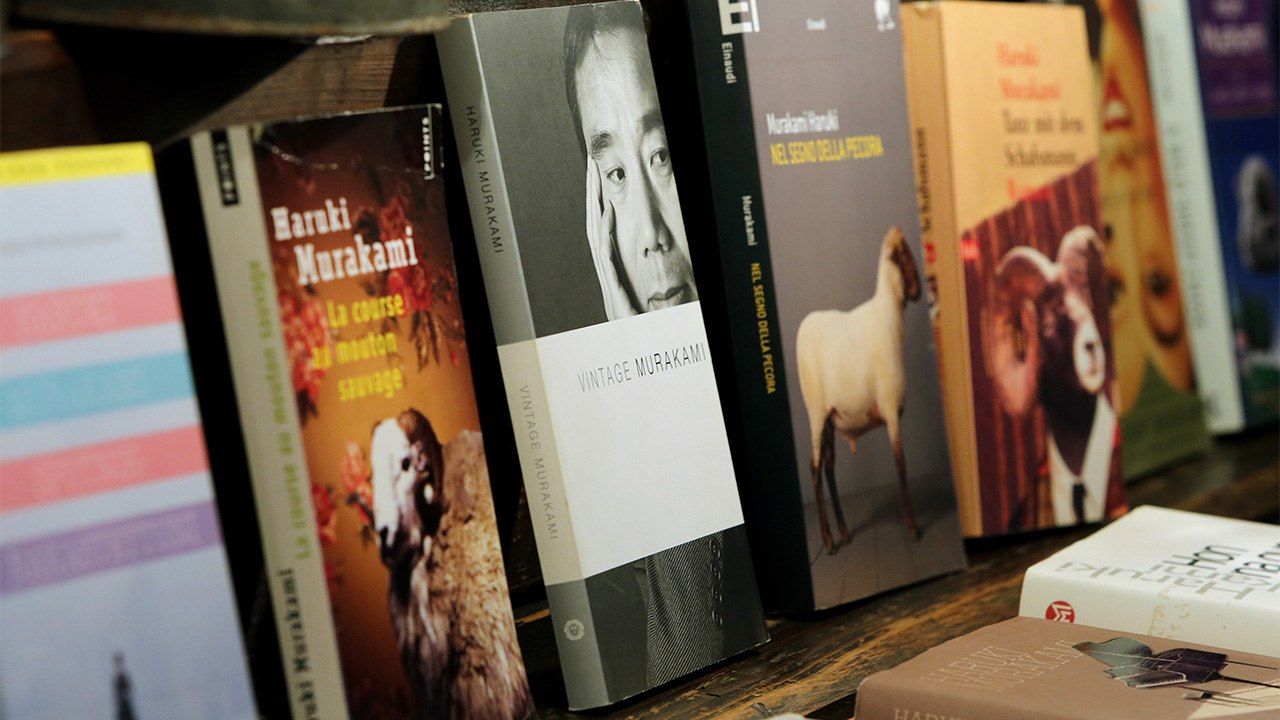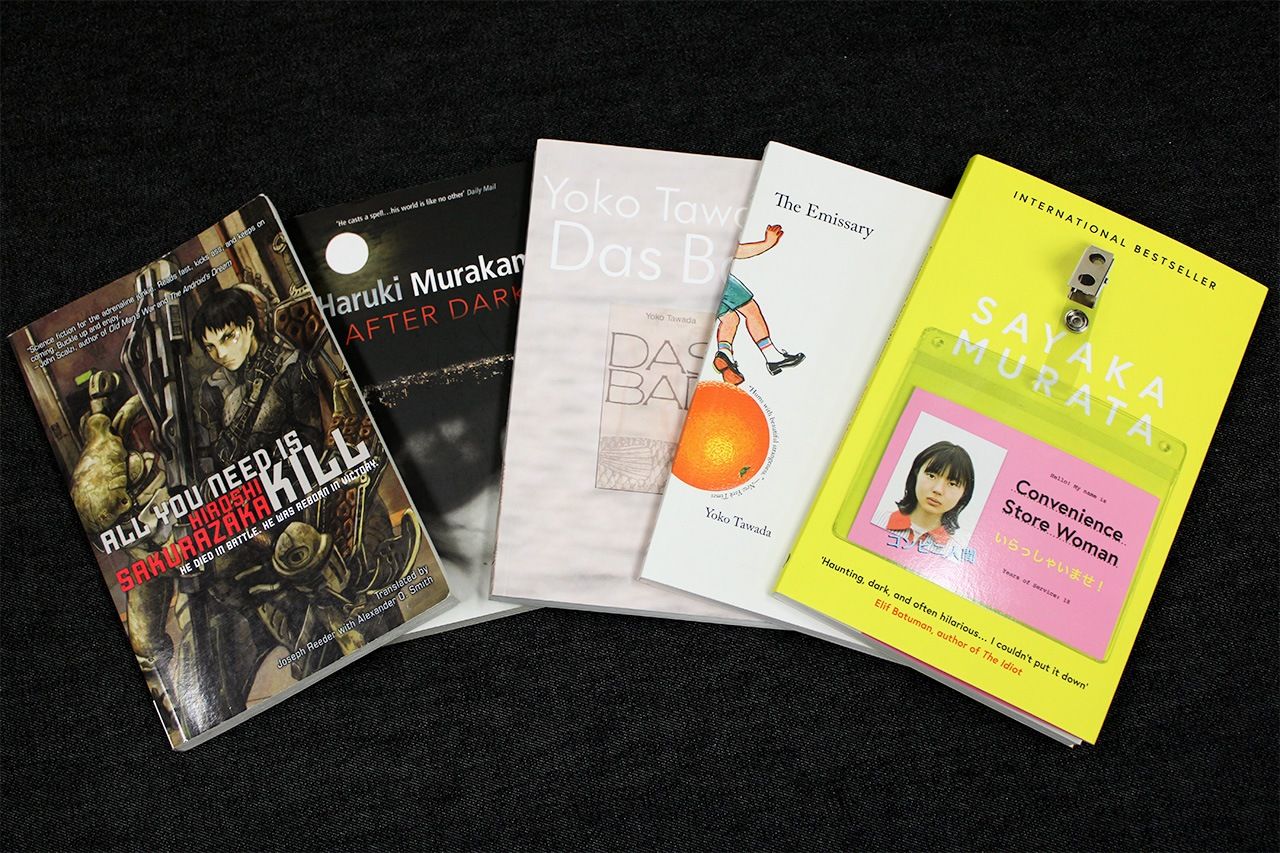
Following Murakami’s Path: Japanese Books as World Literature
Culture Books Arts- English
- 日本語
- 简体字
- 繁體字
- Français
- Español
- العربية
- Русский
Reshaping the Image of Japanese Literature
Murakami Haruki’s first appearance in the New Yorker came with the English translation of his short story “TV People,” which appeared in the issue for September 10, 1990. The publication of a Japanese writer’s work in a US literary magazine was a groundbreaking moment not only for the career of the author himself but also for Japanese literature in translation—particularly in English. Murakami’s books have since been published in over 50 languages and include a number of global bestsellers, while he has received international awards like the Franz Kafka Prize and the Jerusalem Prize. His combination of critical and commercial success is unique among Japanese writers.
Murakami’s arrival on the scene dramatically transformed the image of Japanese literature in translation. Edward Fowler describes how the 1955 publication of two English editions by US publisher Knopf—Osaragi Jirō’s Homecoming and Tanizaki Jun’ichirō’s Some Prefer Nettles—ushered in a golden age of translation of modern Japanese literature. Focused on a “big three” of Tanizaki, Mishima Yukio, and Kawabata Yasunari, and against a background of renewed interest in Japanese culture in postwar America, the country’s literature became firmly associated with an exotic aesthetic sensibility.(*1) Murakami’s works, which are strongly influenced by US writers and blend elements of fantasy into a contemporary Japanese setting, have reshaped the image of Japanese writing for readers in the English-speaking world.
Ahead of Murakami’s English-language debut, he initially worked together with his Japanese publisher, but later chose his own agent and collaborated closely with American editors to fine-tune his fiction for English-speaking (especially North American) readers.(*2) Irmela Hijiya-Kirschnereit has also noted that his writing in works like After Dark appears to have future translation in mind through such aspects as careful explanations of details that would be common knowledge to Japanese readers. This use of what she calls “pretranslation”(*3) shows how Murakami has set a new template for the age of translated literature.
Light and Dark Side of Success
Some 30 years have passed since Murakami’s works arrived in the English-speaking world. He could be said to represent Japanese literature in English during the period in the same way that Tanizaki, Mishima, and Kawabata did from 1955 to the 1980s.
Murakami’s overwhelming dominance of the country’s literature in translation has its light and dark side. His prose draws influence from writers like Raymond Chandler, Kurt Vonnegut, and Raymond Carver, and presents few difficulties for rendering in English and other European languages. While he has been embraced by readers around the world, his style has also come in for criticism from many writers and critics. Perhaps foremost among them is Mizumura Minae, who, despite her fluency in English due to growing up in the United States, has chosen to write in Japanese.
In his article “The Murakami Effect,” Stephen Snyder identifies a tendency for contemporary Japanese writers to be judged solely on the basis of how closely they match the description “the next Murakami.” Authors like Ogawa Yōko and Kirino Natsuo, translated by Snyder himself, have been packaged as “Murakami-like,” ignoring their own distinctive qualities. At the same time, Snyder acknowledges that Murakami’s global success has drawn welcome attention to many other Japanese writers. In any case, it is impossible to think about the last 30 years of Japanese literature in translation without considering its most famous contemporary creator.
Greater Diversity
When considering recent translation of Japanese literature, the first thing to note is the great diversity of authors. Until around the 1980s, male writers were preponderant, but from the 1990s, works appearing in English have included those by many female writers, including Kirino, Ogawa, Tsushima Yūko, and Murata Sayaka. Kirino’s Out—published originally in 1997 and in English in 2004—is a crime story centered on women working at a box lunch factory in the Tokyo suburbs. Its high praise and nomination for the Edgar Award for Best Novel, presented by the Mystery Writers of America, spurred on further translation of Kirino’s books. Meanwhile, the speed of translation of Murata’s Convenience Store Woman—from initial publication in 2016 to English version in 2018—demonstrates the increased emphasis on promptly guiding hot Japanese bestsellers through the process.
There is also greater translation of genre fiction, including mystery and science fiction. In China, mystery king Higashino Keigo is one of the most popular foreign authors of any nationality. The publisher Haikasoru is contributing to the range of Japanese fiction read overseas with SF writers like Project Itoh (Itō Keikaku) and Toh EnJoe. And contemporary poets, such as Itō Hiromi, are also increasingly read in translation.
One new genre making waves and winning fans around the world is the light novel. These are easy-to-read books mainly aimed at young people. The ongoing manga and anime boom since the 1990s has led to popular works’ source texts or later novelizations finding readers in translation. Many light novels are part of lengthy series with distinctive vocabulary based on the characters’ circumstances, which can pose problems for translators, but they are starting to appear around the English-speaking world and in Southeast Asia.
Government support for literary translation has also played an important role. In 2002, the Agency for Cultural Affairs launched the Japanese Literature Publishing Project to promote overseas publication of Japanese works not only in English but also in languages like French, German, Russian, and Indonesian. The many books translated under this initiative—in some cases retranslations—include modern classics like Natsume Sōseki’s Botchan and Akutagawa Ryūnosuke’s Rashōmon, postwar masterpieces like Ōoka Shōhei’s Musashino fujin (A Wife in Musashino) and Kojima Nobuo’s Hōyō kazoku (Embracing Family), and works revealing the contemporary state of Japan. In addition to support for translation, the JLPP offered publishers guaranteed purchases of the books printed. This eased the path to other languages for important literary works that lacked commercial viability, greatly increasing the range of texts available for Japanese literature classes overseas, and was therefore highly regarded. However, politicians did not appreciate its importance, and the JLPP lost its funding for new translations in sweeping government cuts in 2010.
Becoming World Literature
Having broken free from fixed images about Japanese culture, the country’s writing appears to be moving toward gaining appreciation from many different perspectives as world literature. There are sure to be cases where foreign readers uncover new value unnoticed by Japanese speakers.
There may also be a need to rethink what “translation” actually means. After publication in English, Sakurazaka Hiroshi’s light novel All You Need Is Kill was adapted into the Hollywood blockbuster Edge of Tomorrow. Despite sweeping changes to the character and geographical setting, the central plotline—of a lead character who repeatedly relives the same day in which he battles aliens, looping back each time he is killed—was faithfully “translated.” Fascinatingly, the original motif of representing the experience of playing a video game conveyed itself to movie audiences. One might say that the core concept was successfully communicated, even with the many alterations. Can this be considered a “faithful” translation?
Society continues to transform at constantly increasing speed. Over the past 30 years, e-readers, social media, and advances in translation technology have brought change to the literary translation environment. It is common to debate which authors and works should be chosen for translation and how they should be translated. In the future, however, the central question of what universal value works can convey through translation in our mutable world will become ever more important.

From left, All You Need Is Kill by Sakurazaka Hiroshi; After Dark by Murakami Haruki; Das Bad (The Bath), a German translation of an unpublished Japanese text by Tawada Yōko; The Emissary by Tawada, which won the National Book Award for Translated Literature in the United States; and Convenience Store Woman by Murata Sayaka.
(Originally published in Japanese on May 21, 2019. Banner photo: Works by Murakami Haruki translated into various languages. © Jiji.)
(*1) ^ Edward Fowler, “Rendering Words, Traversing Cultures: On the Art and Politics of Translating Modern Japanese Fiction,” The Journal of Japanese Studies 18, No. 1 (Winter 1992), pp. 1–44. Note, however, that Knopf had previously published Futabatei Shimei’s Sono omokage as An Adopted Husband in 1919, which was widely reviewed and distributed.
(*2) ^ Murakami Haruki has written about the process himself in an essay that appears in the Japanese version of The Elephant Vanishes, and discussed it in an interview with David Karashima, which appears in the latter’s Haruki Murakami o yondeiru toki ni wareware ga yondeiru monotachi (Who We Are Reading When We Are Reading Haruki Murakami) (Tokyo: Misuzu Shobō, 2018).
(*3) ^ Irmela Hijiya-Kirschnereit, “Pretranslation in Modern Japanese Literature and What It Tells Us About 'World Literature,’” in Translation and Translation Studies in the Japanese Context, ed. Nana Satō-Rossberg and Judy Wakabayashi (London and New York: Continuum, 2012).